How to Protect Your Privacy on Android
Please note that these instructions may not apply to all Android devices and operating systems. You might also be interested in our privacy tips for iPhone.
Follow these easy steps to protect the personal data on your Android devices, and don't forget that can include TVs and other dedicated devices as well as phones and tablets. Also note that the instructions below may differ slightly depending on your version of Android.
1. Minimize Google’s data collection.
On most Android devices you don’t have to sign in with your Google account, although some services may be limited. Also make sure you review your Google activity profile at https://myactivity.google.com/myactivity.
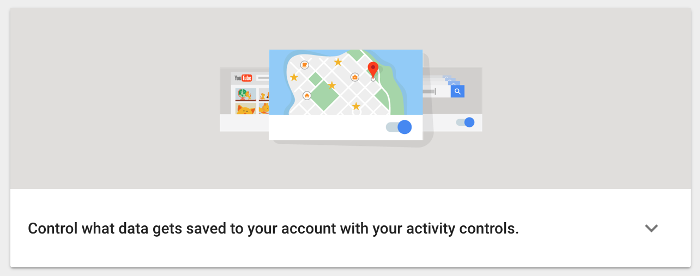
2. Lock down your device.
Use a PIN or ideally an alphanumeric password to lock your device.
How: Settings > Security > Screen lock
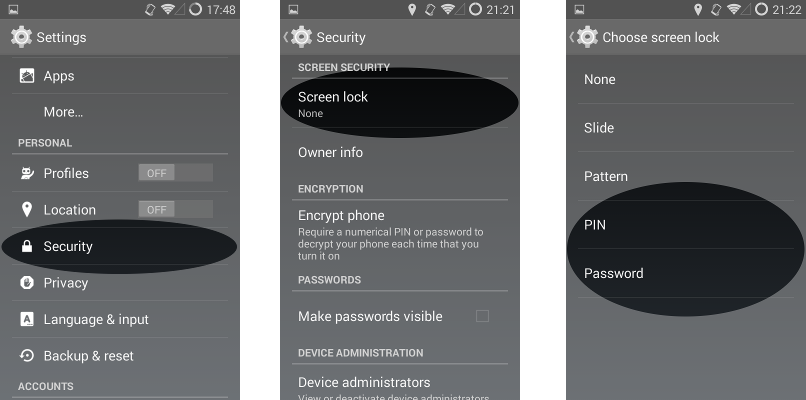
3. Encrypt the device to protect the data stored on it.
Note that a PIN or password needs to be set to do this, and the device needs to be plugged in.
How: Settings > Security > Encrypt phone/tablet
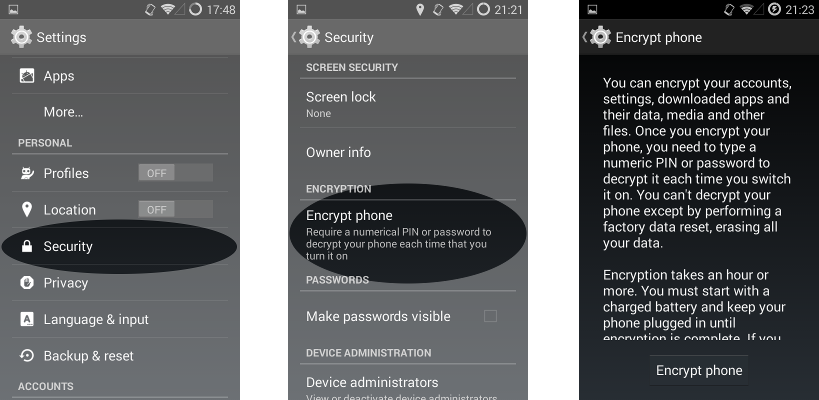
4. Keep the device’s software up-to-date.
Good advice for any device, not just Android.
How: Settings > About phone/tablet > System Update
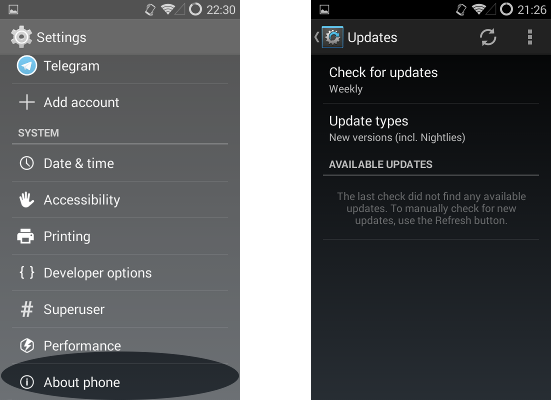
5. Be wary of third-party app stores.
Also, don’t allow installation of apps from “unknown sources” unless you’re very confident in the source.
How: Settings > Security > Unknown sources
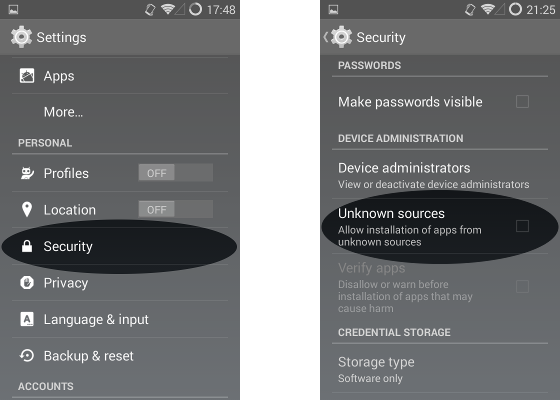
6. When installing an app, check its permissions first.
Think carefully about whether to continue installation if it’s requesting access to sensitive data. Seek out apps that require the minimum permissions necessary, like our search app.
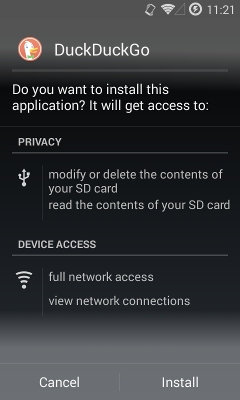
7. Review permissions for installed apps.
You may have missed changes during updates or perhaps changed your opinion of what’s acceptable. Remove apps you no longer use, and consider replacing some with ones that request the minimum permissions necessary to do their jobs like DuckDuckGo (us) for search.
How: Settings > Apps > [app name]
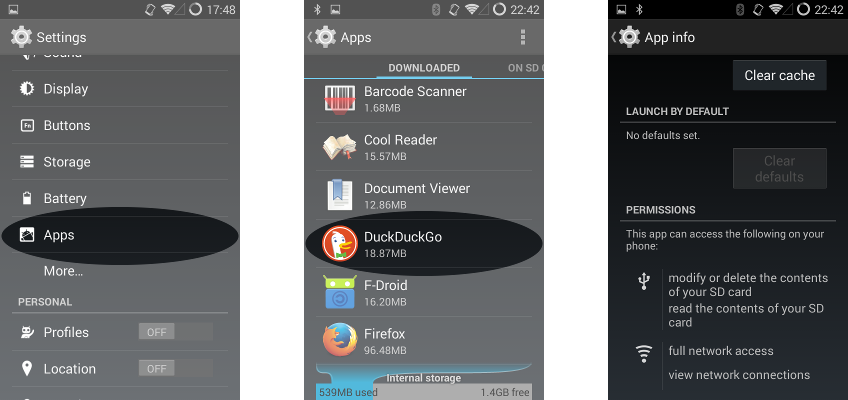
8. Consider which apps you want syncing with the cloud.
Not syncing apps will limit the data they send to the cloud.
How: Settings > Accounts section > [app name]
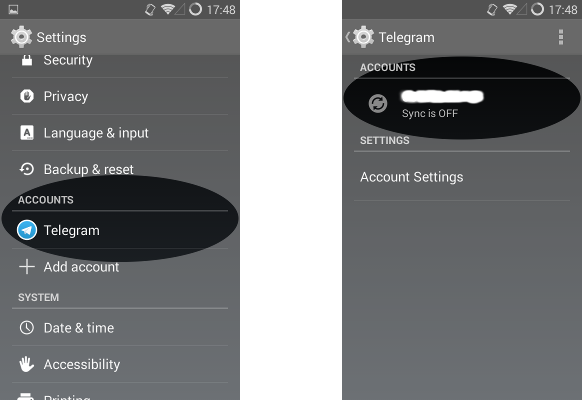
9. Hide private notifications.
Stop apps from showing notification content in the lock screen (newer versions of Android only).
How: Settings > Sound & notifications
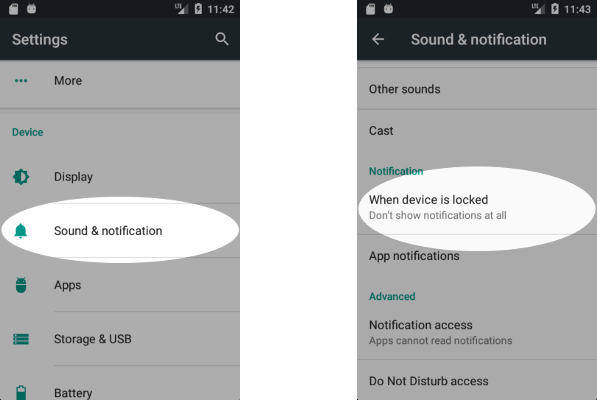
10. Review default apps.
Assess your default applications, making sure you trust critical communication apps like email, SMS, and browser (newer versions of Android only).
How: Settings > Apps > ⚙ icon > Default
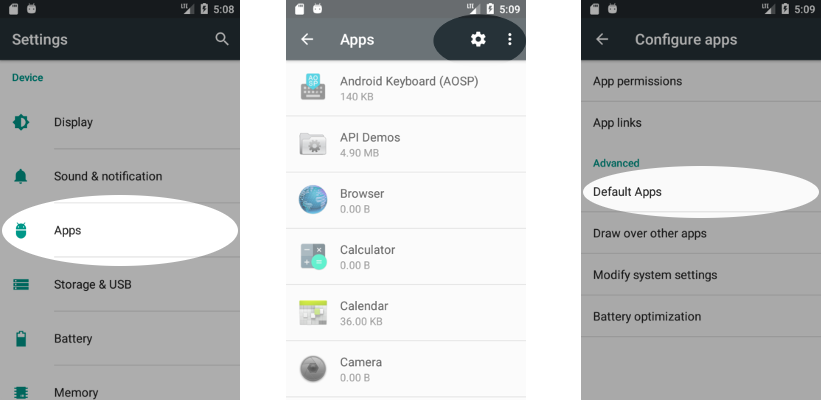
11. Don’t share your location with apps.
Stop individual apps accessing your location (newer versions of Android only).
How: Settings > Apps > ⚙ icon > App permissions > Location
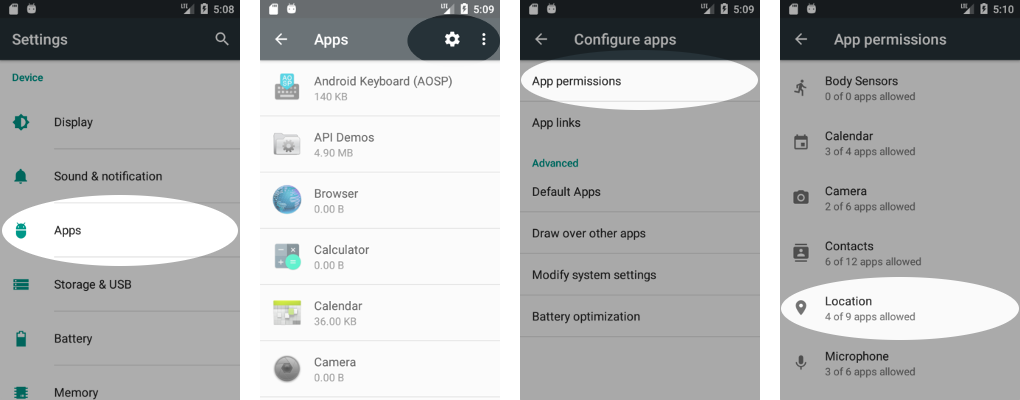
12. Don’t share your location with Google.
Stop Google services tracking your location, and reset your location history.
How: Settings > Location > Google Location History
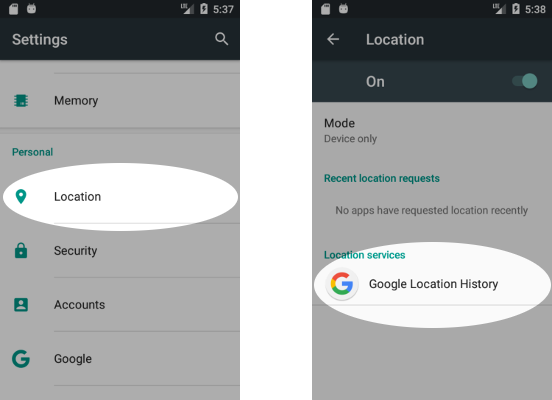
13. Consider using a non-Google version of Android.
One popular example is LineageOS, based on CyanogenMod, although this requires technical knowledge to install on your device.
How: Be aware of the risks and follow the install guides.
14. Install the DuckDuckGo Privacy Browser.
Our browser has built-in tracker network blocking, smarter encryption, and, of course, private search, all designed to operate seamlessly together while you search and browse the web. There's also a widget for your home screen.
How: Get the app from the Google Play store or https://duckduckgo.com/app
15. Set DuckDuckGo as your default search engine.
Not using the DuckDuckGo browser for Android yet? You can still search anonymously with DuckDuckGo. Although it’s not possible to add DuckDuckGo Private Search in Android’s built-in browser, because Google doesn’t include us as an option – go figure! – you have several other options.
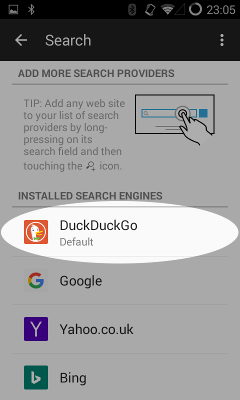
General note
When using Google services and apps on Android and elsewhere, you can control your data by:
Reviewing and limiting Google’s tracking of your activity in your My Activity page. See our post on deleting your Google history.
Disabling Google’s ad profiling and tracking. See our post on changing Google ad targeting settings.
Congratulations! You’ve just taken a big step to increasing mobile privacy and protecting the data on your Android device. You may also be interested in the Tor community's efforts to harden Android further, or our privacy tips for iPhone.
For more privacy advice follow us on Twitter, and stay protected and informed with our privacy newsletter.
